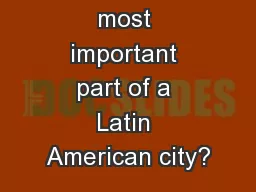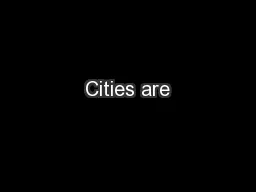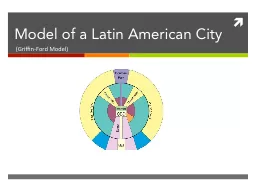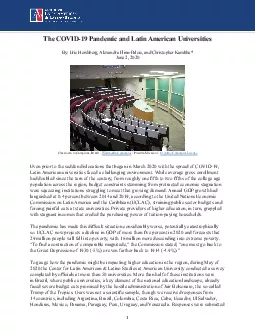PPT-What is the most important part of a Latin American city?
Author : conchita-marotz | Published Date : 2017-05-02
What is in the periphery of Latin American cities What is the difference between a formal and an informal economy What is the disamenity section of this model How
Presentation Embed Code
Download Presentation
Download Presentation The PPT/PDF document "What is the most important part of a Lat..." is the property of its rightful owner. Permission is granted to download and print the materials on this website for personal, non-commercial use only, and to display it on your personal computer provided you do not modify the materials and that you retain all copyright notices contained in the materials. By downloading content from our website, you accept the terms of this agreement.
What is the most important part of a Latin American city?: Transcript
Download Rules Of Document
"What is the most important part of a Latin American city?"The content belongs to its owner. You may download and print it for personal use, without modification, and keep all copyright notices. By downloading, you agree to these terms.
Related Documents














